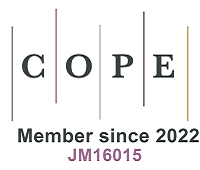Effect of ausforming on isothermal transformation below the martensite start temperature in NiCrMoV steel: an in-situ neutron diffraction study
Abstract
In-situ neutron diffraction during the thermomechanical controlled processing was employed to investigate the effect of ausforming on isothermal transformation below the martensite start temperature (Ms) in the NiCrMoV steel. After the occurrence of athermal martensitic transformation during cooling, the isothermal transformation below the Ms proceeded in two distinct stages: Stage 1, characterized by a rapid transformation rate, and Stage 2, which progressed more slowly. Ausforming suppressed both the athermal martensitic transformation and isothermal transformation in Stage 1 through mechanical stabilization. In contrast, ausforming accelerated the isothermal transformation in Stage 2, likely due to the enhanced carbon diffusion, indicating bainitic transformation characteristics in this stage. The resulting microstructure consisting of tempered martensite, bainite and retained austenite, exhibited an excellent strength-ductility balance, achieving an ultimate tensile strength of 1989 MPa, a uniform elongation of 7.1%, and a total elongation of 16%. The present study provides new insights into phase transformation mechanisms below Ms and demonstrates the potential of ausforming-assisted processing for enhancing the mechanical properties of high-strength steels.
Keywords
Ausforming, bainitic transformation, martensitic transformation, in-situ neutron diffraction, microstructure, mechanical properties
Cite This Article
Gong W, Harjo S, Kawasaki T, Yamashita T, Shibata A, Shinozaki T, Tomota Y, Tsuji N. Effect of ausforming on isothermal transformation below the martensite start temperature in NiCrMoV steel: an in-situ neutron diffraction study. Microstructures 2025;5:[Accept]. http://dx.doi.org/10.20517/microstructures.2025.26













